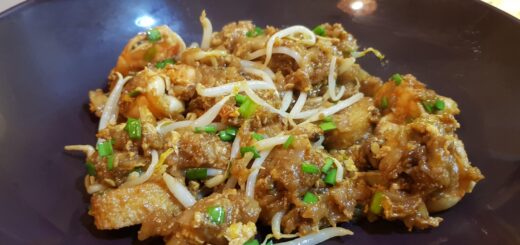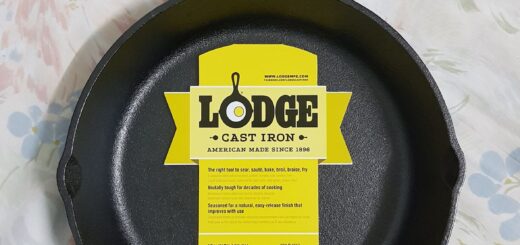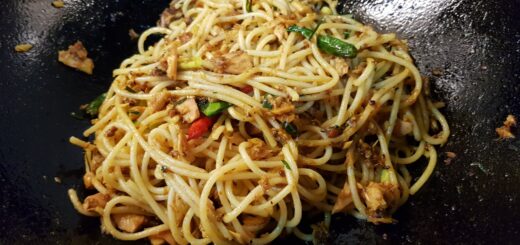Masak Lemak Cili Api Daging / Beef Coconut Curry with Monkey Chillies
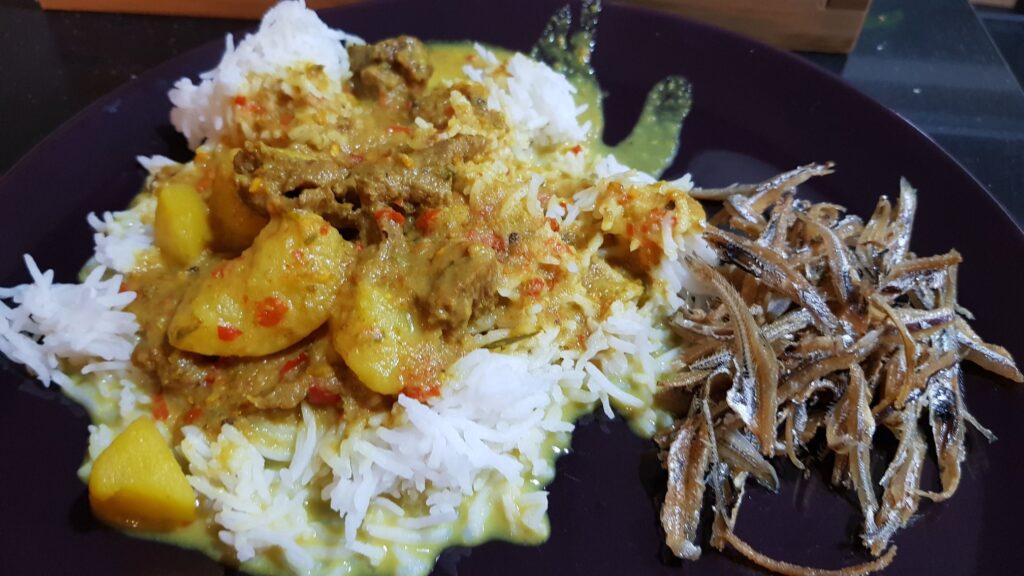
This is one of my favourite dishes that my mum makes regularly. It originates from the Negeri Sembilan area of Malaysia. My dad’s village is on the border of Melaka and Negeri Sembilan and they follow a lot of “Noghori” traditions, so I guess this is part of my heritage too.
Since we have been under MCO lockdown and I’ve not had the opportunity to savour my mum’s cooking for many weeks, I decided to learn how to make it on my own.
As I’ve been searching for everything on-line without leaving my apartment, it took my some time to source the ingredients. I’ve included links on where I got everything from.
I started out by doing a google search and studying many different ways to cook this. No two recipes were alike!
As with most Asian and particularly Malay recipes, the quantities are “agak-agak” which essentially translates to “more or less”. It is one of the beatiful aspects of local cooking, where there is no right or wrong way to prepare a dish, and no two people will make it exactly the same way. How good a dish is is also therefore a reflection of the experience and calibre of the cook! I find this interesting as while it is a bit more challenging to get started, it encourages you to learn what flavours and effect each individual ingredient contributes to the overall dish, and to experiment to find your personal “balance” of ratios.
Here are my project notes …
The recipe is quite versatile, as the beef can also be used with chicken, prawns, fish or any other kind of protein.
I’ve only bought ribeyes and sirloins steaks for sous vide and pan grilling from my local village/jaya grocer, so this is my first time dealing with beef for curries. For curries you can use cheaper / local cuts of meat.
Beef has been a bit hard to source during the current lockdown period, particularly if you are fully complying with #StayAtHome. Fortunately a resident in my condo organized a “bulk buy” from a butcher (If anyone needs the contact for the Butcher here it is +60 16-908 1996. They should be able to deliver within Klang/Shah Alam/PJ Area.). As long as you have a minimum order of 5kg, they will deliver to your home for free. Thanks to the fellow resident I was able to place an order for 1kg. I used 500g for this recipe.
I don’t really know my cuts of beef, especially when ordering in Malay, except that “Batang Pinang” is Tenderloin, which is one of the softest cuts. It’s a bit overkill for a curry but probably the most flexible cut to buy if you’re doing stir fries as well.
I found that meat is much easier to cut into bite sized pieces (which is what you need for this recipe) if it’s been slightly frozen.
For slow cooking / pot roasting I would like to have some beef brisket, but I haven’t figured out what that translates to yet.
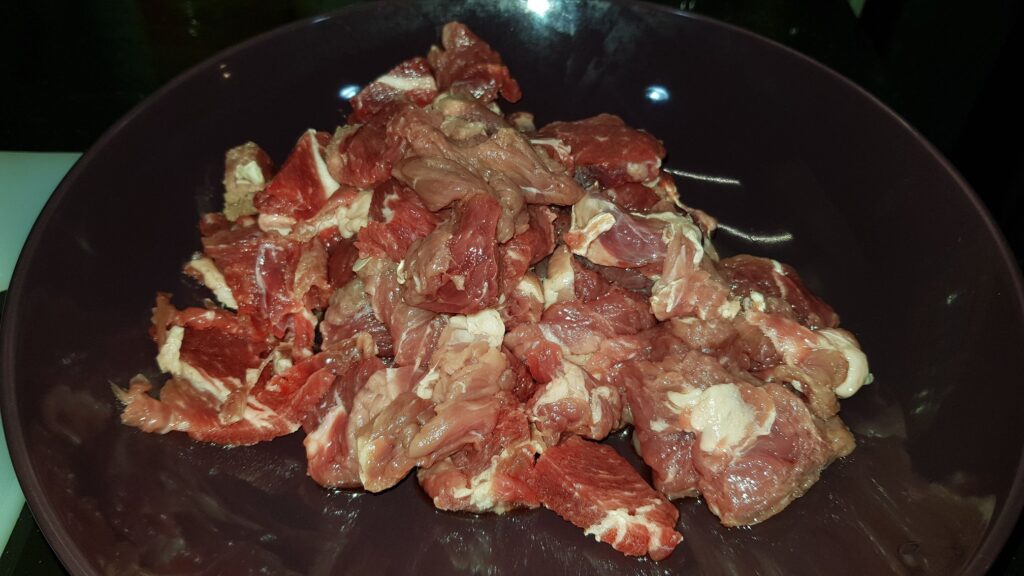
These are the spices that make up the dish. We have:
- cili padi/api (monkey chillies)
- bawang putih (garlic)
- bawang kecil (shallots)
- serai (lemongrass)
- lengkuas (galangal)
- kunyit hidup (turmeric)
I was able to source these between Tesco Online and also MyGroser.
This is just a rough guideline, as I said earlier, most quantities are “agak-agak”.
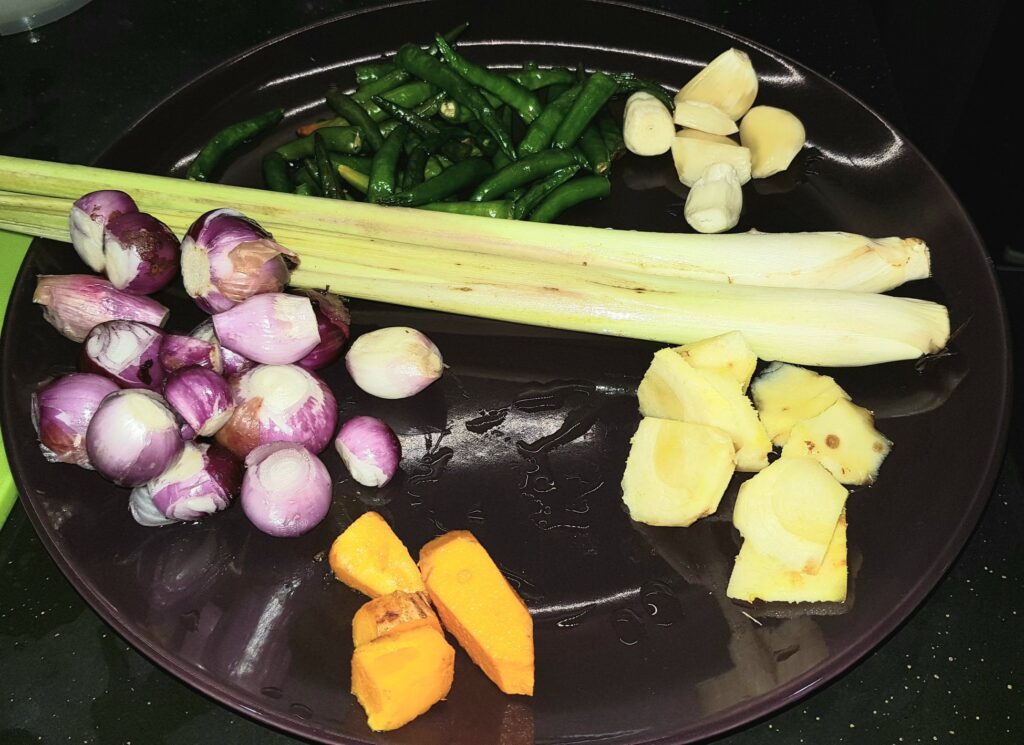
Traditionally one would use a pestle and mortar and pound all the spices. For lazy bums like me we just use a blender.
There are two approaches with regard to the serai (lemonglass). My sister and mum will just bruise it a bit and add it as-is into the pot, but a few recipes I found will blend it together into the paste. I’ve tried both ways and my preference is to blend it — it makes for a thicker paste. Run the blender longer if you want a smooth and consistent paste.
And yes the turmeric is going to stain your plastic blender jug. This is why most asian homes have two jugs for their blender — one for spices and one for other stuff.
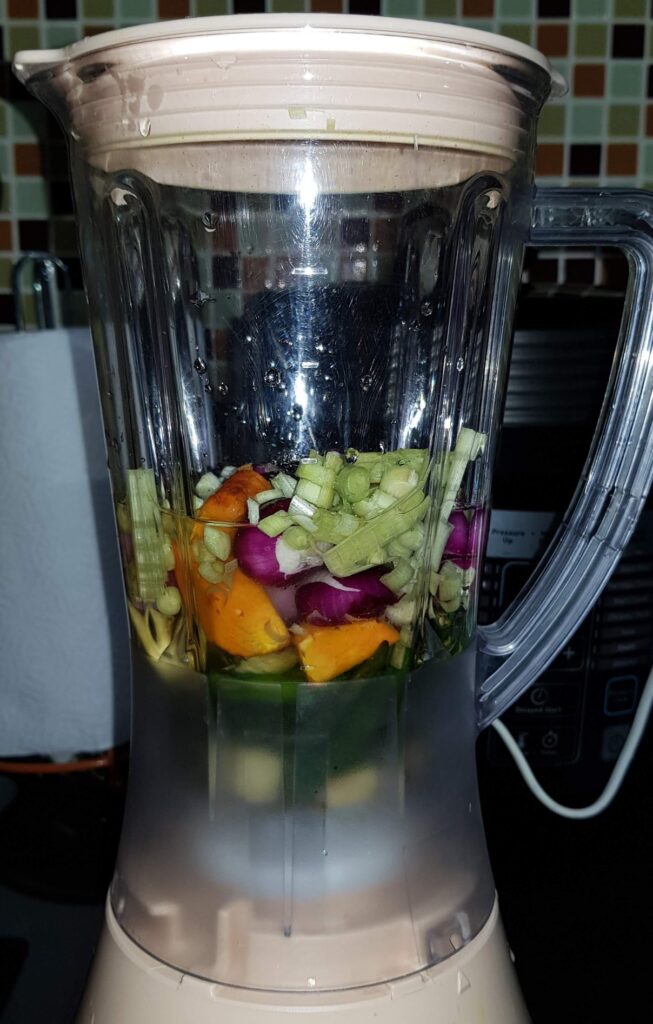
It now has the signature colour of the curry!
Some water probably needs to be added to the jug to make it blendable. If you want your curry thick then try to minimize the water at the stage. If you use too much, it’s not a problem, you’ll just have to spend a longer time later boiling it off.
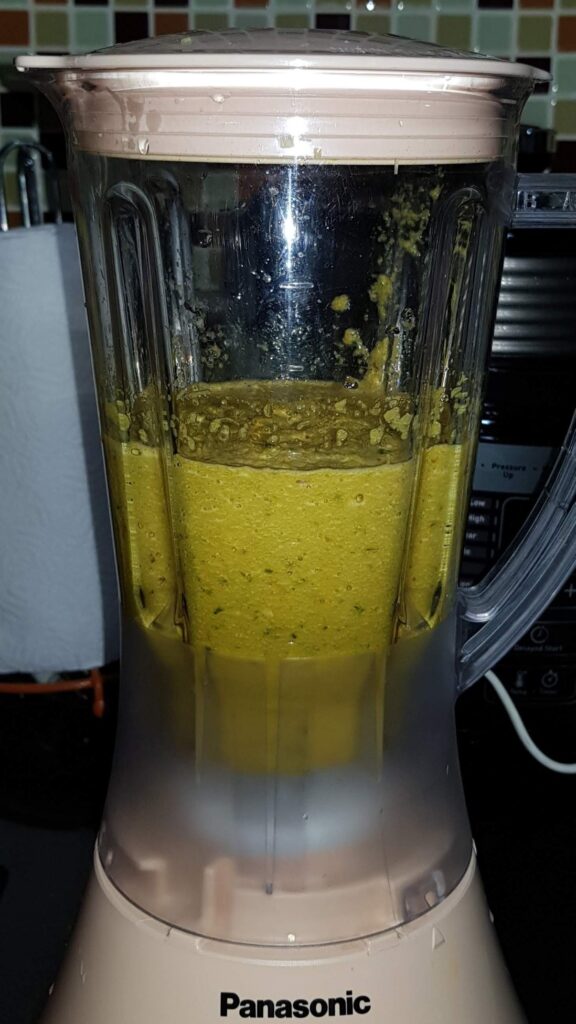
Potatoes are a great addition to any curry dish as it will absorb the flavour and liquid. I peeled and chopped up 3-4 potatoes into small pieces, and washed them.
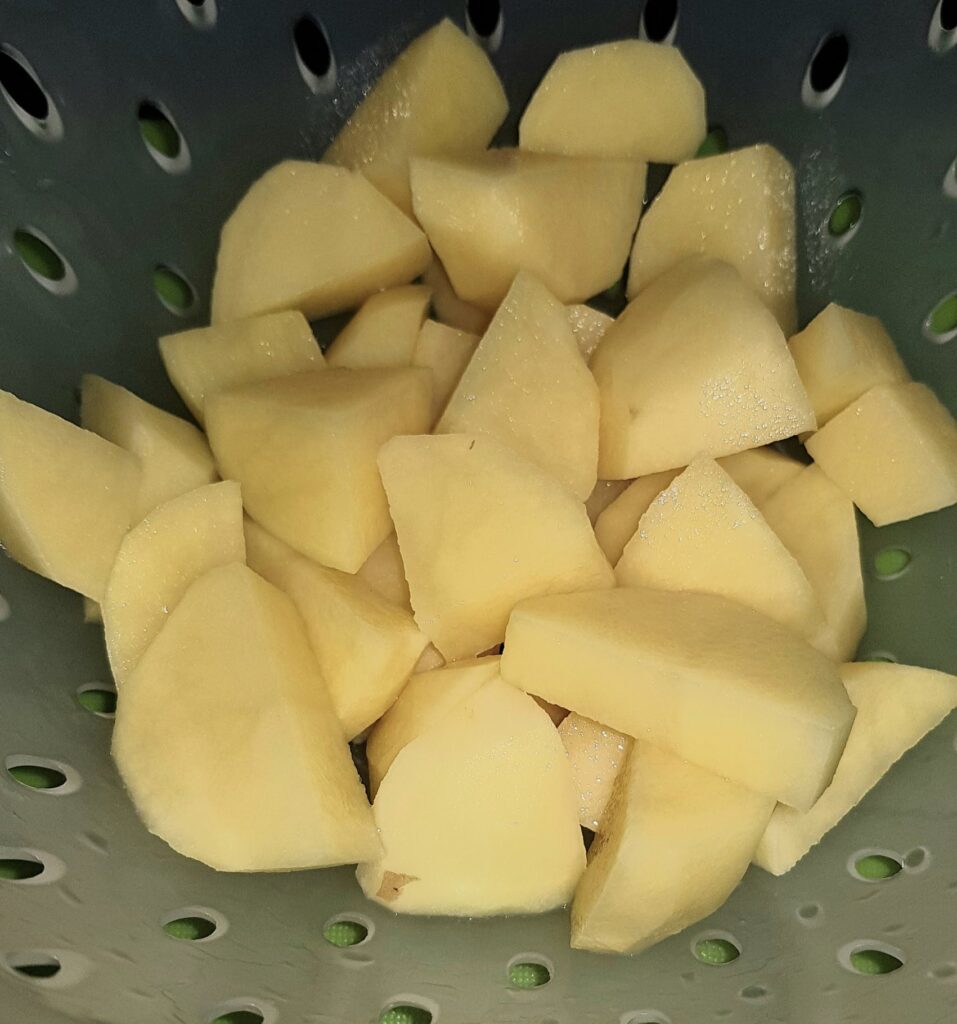
The beef, the blended paste and potatoes go into the pot of the pressure cooker
I add a teaspoon of salt in at this stage, just to season the food as it is cooking.
You don’t have to use a pressure cooker, especially with tenderloin beef. If you have lesser cuts of beef, you can just boil it first till it is soft. I’m using a pressure cooker because I just got it and am looking for an excuse to use it. I also like using it because:
- Pressure cooking means even tough cuts of beef takes only 20-30 minutes to cook
- The food is sealed in while cooking which means very little water escapes, and therefore you don’t have to keep an eye in case it boils away and burns your food
- The pot is deep … no splash or mess to clean up!
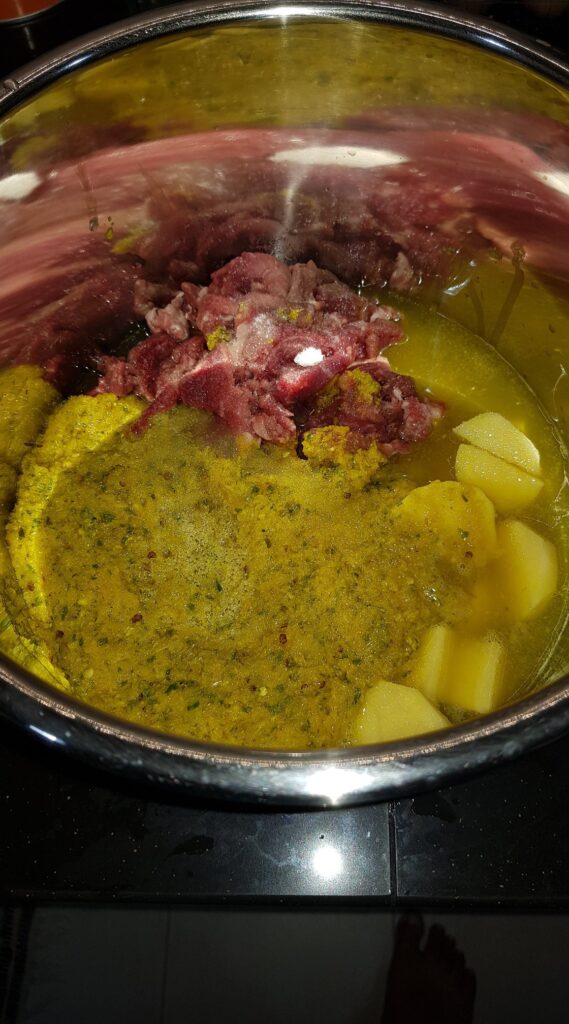
The first stage of cooking is to soften the meat. On this Tefal cooker, you press “pressure cook” which cycles an indicator through the presets on the right.
The Beef/Lamb preset is for 30 minutes. This is probably right with lesser cuts of beef, but with tenderloin I found 15-20 minutes more than enough. To achieve this on the Tefal, you have to declare it as … “Chicken”. 😎
Make sure the lid is sealed and then press the power button.
The machine will go through it’s stages of “Heating up”, “Pressure Up” and “Maintain Pressure”. I just left it to do it’s thing. After about 15 minutes you’ll get the aroma of spices wafting through your kitchen.

After about 20 minutes, when it beeps, the pressure cooking stage is done and the “Pressure Release” indicator lights up.
You can either wait for it to release the pressure slowly on its own … or press the pressure release button and release it manually.
Open the lid and the beef and potatoes are cooked.
Next, with the lid open, we put the machine into the “saute/sear” mode by pressing multi-cook till that option is highlighted, and then press the power button.
The purpose of this stage is to reduce the water and introduce the final ingredients.
(Not seen in the video but …) here we add in 1 or 2 pieces of tamarind slices. This adds a slight sourness to the curry which adds contrast and some “kick”. Having tried it without, I would say this is mandatory.
https://eshop.tesco.com.my/groceries/en-GB/products/7002586495
You can also add in a few lime leaves at this point. It’s a different kind of sourness to the tamarind slices.
https://eshop.tesco.com.my/groceries/en-GB/products/7072979305
Don’t go overboard with either, as the we just want to add a hint of acidity to the curry. It’s not a tom yum!
Let the water boil away until the curry is at the desired consistency.
Once the amount of liquid has been reduced to your desired amount, add salt until the curry tastes “just right” to your liking.
Finally, turn off the heat, and stir on some Santan (coconut milk). The amount depends on how rich you want the curry to be, and also your cholestrol levels.
https://eshop.tesco.com.my/groceries/en-GB/products/7001425927
The “Masak Lemak Cili Api” is now complete !
As with most curry dishes, it tastes better the next day, so eat a bit today, and keep the rest in the fridge for tomorrow!
When I was young my mum would always serve Masak Lemak Cili Api with a side dish of Ikan Bilis Goreng (Fried Anchovies).
So this is now a must have for me too.
I bought the ikan bilis on shopee … and it was of quite good quality — sliced and cleaned.
Here’s the link: https://shopee.com.my/product/10767117/5016598263

Soak them in a bowl of water for 5 minutes, and then give them a good wash under a kitchen tap with a strainer.
Wait till (mostly) dry or pat with kitchen paper.
Then fry in oil till crispy.
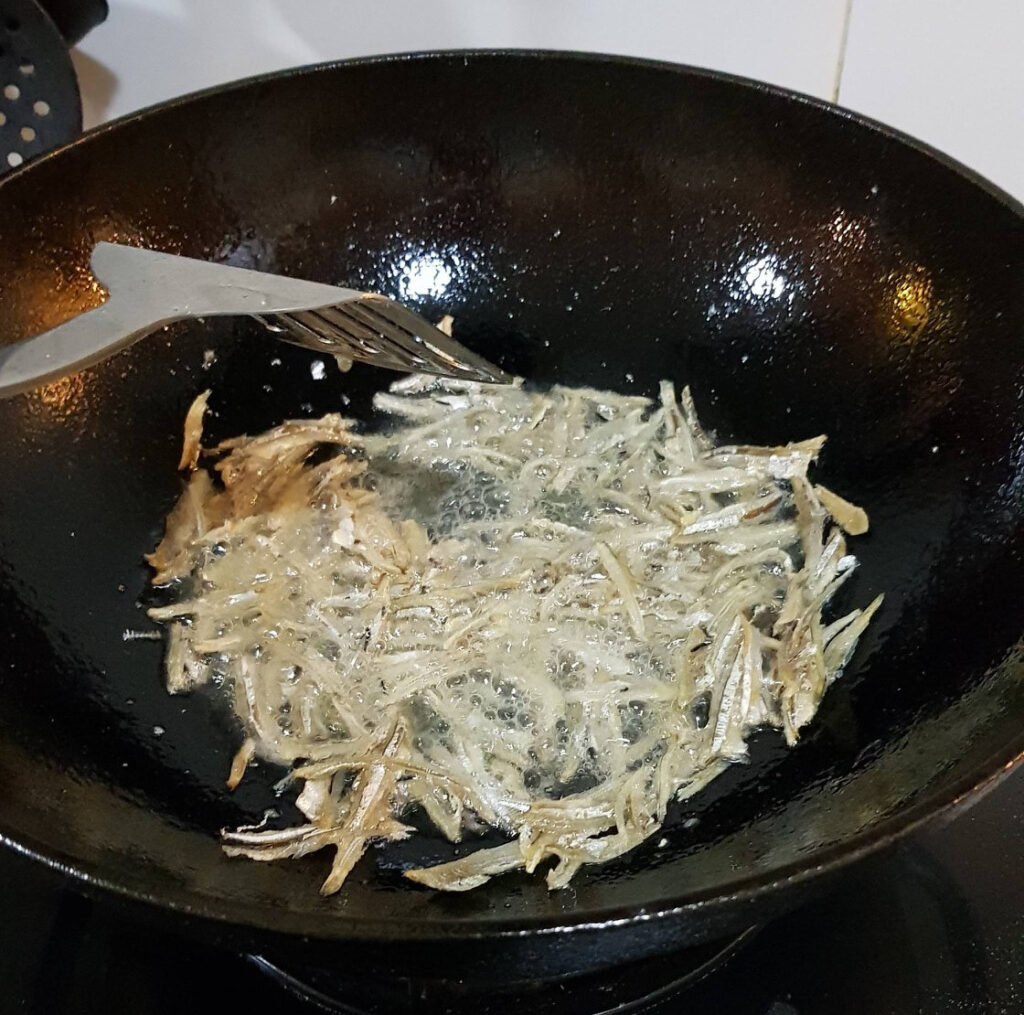
The end result:
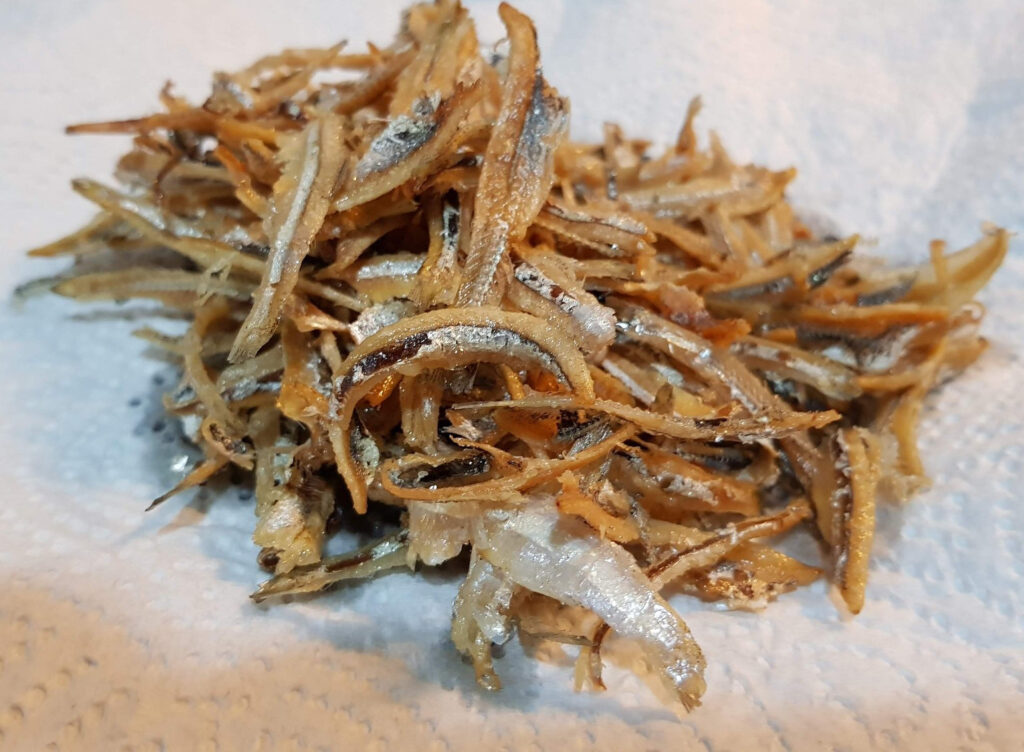
Serve the “Masak Lemak Cili Api” and “Ikan Bilis Goreng” with white rice !


